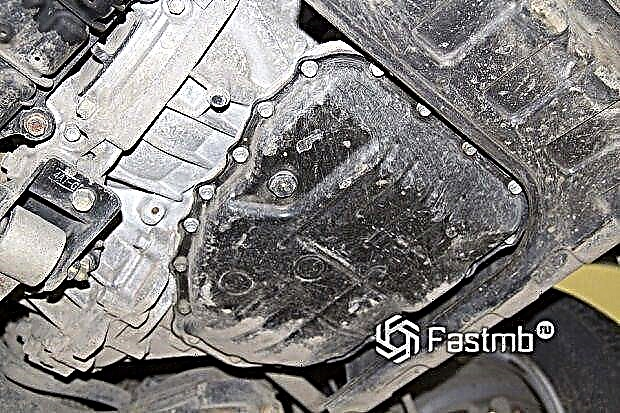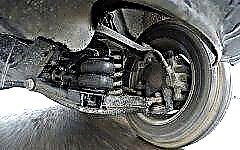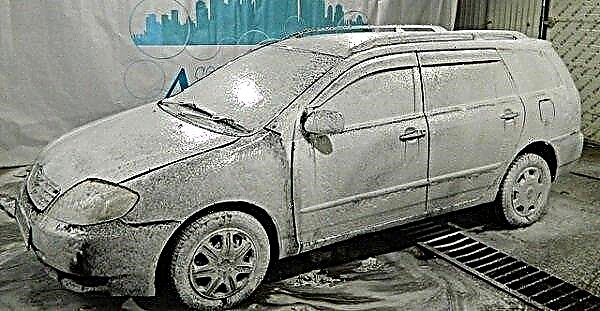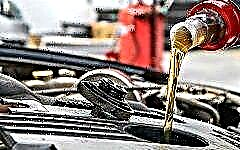
According to the Association of European Businesses, more than 92,000 new Kia Rio were sold in Russia in 2019. This is the third indicator, after two Frets: Granta and Vesta.
Depending on the configuration, the updated version of the popular South Korean B-class sedan is estimated at 815 thousand to 1.17 million rubles. Basically, in vehicles bearing the Kia brand, transmission performance is one of the strengths. But not for Rio! How to improve the situation - further in the review.
New Kia: what has changed
On October 1 of this year, the start of sales in Russia of the restyled version of the fourth generation Kia Rio is scheduled. The car, assembled at a huge plant in St. Petersburg, has acquired a completely new external lighting technology, moreover, the headlights have received a more complex configuration, and only the graphics have changed for the rear lights. On the Premium trim level, this sedan is equipped with LEDs and a remote engine start function.
The radiator grille and bumpers have also been transformed. The redesign of the latter has led to an increase in the length of the car by 20 mm - now it is 4420 mm. Redesigning stamped body parts is too expensive, and that is probably why they were left the same.
The roof of the sedan has received a shark fin antenna, which is black regardless of the body color. Updated rims of 15 inches are also promised, and for more expensive versions - 16. The interior of the car is supposed to be equipped with a modernized media system. And the ground clearance of the Kia Rio remains at the same level - 160 mm.
We are not talking about changes in the transmission, in general, in the technical part of the car. Probably, they are not expected. If so, then the car has the good old engines of 100 and 123 hp. sec., working with six-speed gearboxes: a classic manual transmission or a modern "automatic" installed on the Rio in the Comfort trim levels and above. And if the "mechanics" does not cause much trouble to car owners, then with the automatic transmission, not everything is so smooth.
Features of the automatic transmission Kia Rio

The automatic transmission, called A6GF1, which is equipped with Rio, is the result of a joint work of engineers from Kia and Hyundai. The current version of the box differs from its predecessors in a number of innovations that led to the car saving fuel, accelerating its acceleration, as well as increasing the reliability of the sedan's transmission.
One of these solutions was the introduction of the most expensive and vulnerable device as part of an automatic transmission - torque converter lock-up systems, which opened the way for the direct transfer of torque from the engine to the chassis. Also, the gear ratios of the "automatic" were optimized, as a result of which driving became more comfortable, and the service life of the engine was longer. The service life of the transmission itself is more than 200 thousand km.
Do I need to change the oil in the box
Officially, this gearbox is considered maintenance-free, and therefore does not require an oil change. Its design does not even provide a hole for the probe. However, mechanical chips that gradually accumulate in the transmission fluid can cause accelerated wear of the solenoids and provoke a fairly rapid destruction of the entire box. It is better to play it safe and change the lubricant approximately every 80 thousand kilometers.
Suitable oils for this purpose are Mobil Hyundai ATF SP-III, ZIC ATF SP-3, or, for example, Aisin ATF AFW +. They are approved by the Kia Rio manufacturer and meet all the requirements for this type of lubricant. It is desirable that both full and partial oil changes be carried out in a car service, especially since these services are not so expensive. Car enthusiasts should not experiment here.
The main symptoms of a malfunction of the Kia Rio automatic transmission

This car is not a sports car, and it is not designed for frequent rides at the speed limit. It is also negatively affected by constant travel in traffic jams.
Violation of the recommended operating modes of the sedan leads to premature wear of the gearbox parts, which have a limited service life, and, as a result, to the repair of the transmission. And the manufacturer himself does not deny the likelihood of flaws in the automatic transmission design, which can also provoke a breakdown of this device.
In any case, the earlier the car owner takes measures to troubleshoot the gearbox, the less damage and repair costs will be caused to the car. Therefore, it is important to timely identify the following symptoms of malfunctions in the automatic transmission of Kia Rio:
- An error icon appears on the dashboard. Even in the absence of other noticeable signs of a malfunction of the automatic transmission, it is better to diagnose it. In this case, if repairs are required, then it will not cost as much as in the event of a possible invasion of more serious problems after ignoring the indicator signal.
- Jerks and slippage when the car is moving can be the result of a lack of oil in the gearbox or its contamination, as well as wear of the clutches.
- Extraneous noise in the gearbox. Their cause should be sought in the mechanical wear of the automatic transmission parts or the lack of oil inside it.
- Permanent or temporary vibration can be caused by various factors. This requires diagnostics of the box in a car service.
- One or more gears do not engage, shifting is slow, or other speed changes are difficult. In this case, it is required to check the operability of the electronic control unit, and the diagnostics of the box as a whole.
If these or other signs of a malfunction of the Kia Rio automatic transmission are detected, it is strictly not recommended to dismantle, disassemble and even diagnose the box on your own, so as not to aggravate the situation. The unit is very complex and requires a professional approach. Moreover, some service stations offer a free examination of it.
Usually, the diagnosis of a sedan automatic transmission includes the following steps:
- inspection of the box for damage;
- connecting the scanner to the car;
- a short test drive, during which the equipment reads fault codes, and the diagnostician evaluates the operation of the gearbox;
- disassembly of automatic transmission;
- examination of box parts for defects, as well as determining the degree of their wear;
- compilation of a list of required spare parts.
Perhaps, after diagnosing the car and reading the fault codes, the repair area of the transmission will be limited to the electronic part of its control system. Or maybe not, if there are problems with the hardware.
Weaknesses of the sedan gearbox

Perhaps the most common reason for the failure of Kia Rio automatic transmissions is valve body failure. More precisely, the failure of solenoids - solenoid valves, under the guidance of a computer, control the flow of hydraulic fluid by opening or closing channels in the hydraulic plate.
Due to the incorrect operation of the valve body and solenoids, there is a lack of oil pressure inside the automatic transmission, which almost always leads to burnout of the K-2 drum. In other words, "the shaft breaks the sleeve."
Problems with the automatic transmission oil pump are, alas, also not uncommon for this sedan. The defect is expressed in the complete unwillingness of the car to go neither forward nor backward. Extreme car driving leads to such a result in most cases. For example, sharp acceleration and deceleration.
If a moving Kia Rio has knocks on the automatic transmission during gear shifting, then the matter is most likely in the overrunning clutch. It is this part, not allowing the drive shaft of the box to rotate in the other direction, counteracts such shocks and prevents the engine from braking the machine.
How is the repair of an automatic transmission Kia Rio carried out
Towing the Kia Rio with an automatic transmission is not provided by the manufacturer, therefore, in case of a sudden breakdown of the ill-fated car, the only option for its delivery to the service station will be a tow truck. To troubleshoot automatic transmissions, both original components and cheaper analogs are used. And with the help of used spare parts, you can significantly save on repairing a used sedan.
Depending on the complexity of the problems, there are two ways to normalize the operation of the vehicle's transmission:
- in case of minor breakdowns in the gearbox, its overhaul is carried out with the replacement of faulty parts and filling with a new batch of oil;
- if the malfunctions are too serious for a partial repair, the entire automatic transmission assembly is replaced.
As a standard, the repair of a Kia Rio automatic transmission begins with dismantling the box. Further progress of work depends on the nature of its faults, but the general order is as follows:
- disassembly and bulkhead of automatic transmission;
- selection of components;
- repair of the torque converter and differential;
- replacement of worn and damaged parts;
- cleaning the valve body with detergents;
- automatic transmission layout;
- testing the box at the stand;
- installing it in place;
- filling the box with oil, adjusting and adapting it.
By the way, a complete replacement of a gearbox usually takes much less time than repairing its individual parts. And the remanufactured automatic transmissions available for sale can save the car owner a considerable amount.
Conclusion
The South Korean manufacturer appears to be trying to cater to a wide variety of customer requirements. Rio developers do not intend to give up manual gear shifting, and at the same time offer a very advanced "automatic". And this policy is bearing fruit: the car remains one of the most popular in Russia.
Of course, the automatic transmission, which this model is equipped with, has its weak points, but with a careful attitude to the car and timely maintenance, the risk of car breakdown can be minimized. And ride it even to Brazil!

|| list |
- New Kia: what has changed
- Features of the automatic transmission Kia Rio
- Do I need to change the oil in the box
- The main symptoms of a malfunction of the Kia Rio automatic transmission
- Weaknesses of the sedan gearbox
- How is the repair of an automatic transmission Kia Rio carried out
Kia











